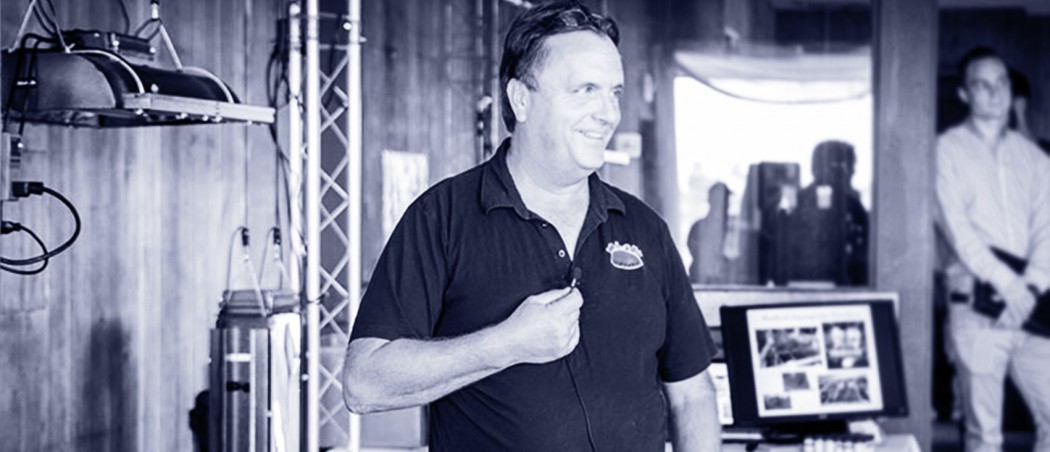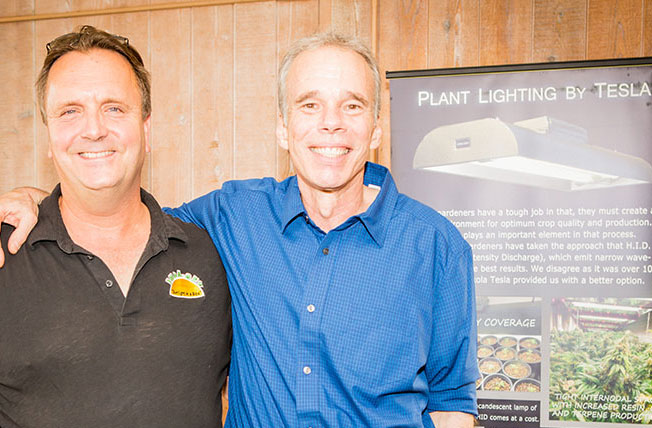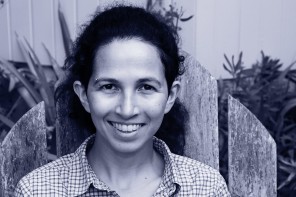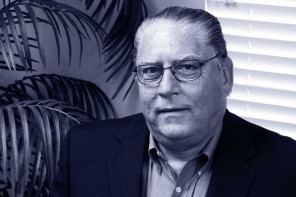Darryl Cotton: Inda-Gro
What he stands for is a greener, healthier community and he’s doing everything in his power to do his part in making that happen. Darryl Cotton, founder and CEO of Inda-Gro, has taken his extensive experience in energy management and engineered a superior line of grow lights that are incredibly energy-conservative. He buries himself in research and is constantly seeking new advancements and new breakthroughs to empower the gardeners and growers of our industry. So, whether you’re growing your own food or your own medication, let us introduce you to the expert who is mastering the art of bringing us the newest and greatest technology to-date.
What was the deciding factor for you to join this particular industry?
Well, I got involved in the hydroponics industry to try and find a way to reduce the wattages and the temperatures for our indoor garden as we try to grow plants for quality and yield. As it pertains to medical, there’s a lot of health advantages due to the medicinal value of cannabis. Almost every day, there’s new discoveries of how it can be used for the pain and suffering that many diseases cause. So, having broad spectrum lights that would be low-heat and didn’t have to be changed out after every couple of cycles is what inspired me to create induction grow lights for indoor gardens.
As it pertains to medical, there’s a lot of health advantages due to the medicinal value of cannabis. Almost every day, there’s new discoveries of how it can be used for the pain and suffering that many diseases cause.
What skills from your previous experiences helped you in what you are doing now?
My previous experiences were energy management for power distribution generators. My job was to manage the amount of energy these generators used in providing power to buildings. All of these power sources have to be engineered to handle the electrical loads in the building so that the generator can hold as much critical loads as possible. When we started engineering those, we also had to start looking at lighting, too. In indoor gardens, lighting becomes one of the elements that accounts for about 30% of the power, so you really want to lower the wattages in your grow rooms while still getting that plant response. My past experience in energy management helped a lot in developing Inda-Gro‘s first line of lights because I was able to make them energy-efficient and get the same, or even better, plant response.
Right now, where are you guiding your passion and energy towards?
One of the things that I’ve taken a notice of here locally in California is our very low supply of water. Rain and snow peaks are practically nonexistent. NASA is telling us that we have just about till the end of the year and then there will not be enough water to support the populous in our state.
Now, I am always actively looking at energy savings. I look at water savings as an integral part of what the garden has to do. If we’re dumping water in our hydroponic systems and sustaining them with bottled nutrients, we have to flush out the water every 10 days and that right there is water, frankly, being wasted. From an engineer’s perspective, you begin to search for other possible systems you could use, such as aquaponics. Aquaponics is a recirculating system that relies on fish waste. All your plant’s macro nutrients come from the fish, while all your micro nutrients come from amendments. We use a trace mineral called, Aquaponic Elements, that provides the necessary levels of calcium, iron, magnesium, and potassium that benefit fruiting and flowering. And this isn’t true for only cannabis, but also hops, peppers, potatoes, and a wide variety of other plants. Aquaponics is truly a water-conservative, ecologically-responsible system that sustains water in a recirculating system and loses only a small amount of water from evaporation and plant intake. It’s a small percentage to what a hydroponic system or soil garden would require in terms of water.
We actually started our own urban garden farm, here in San Diego, called the Barrio Logan Farm. There, we have a variety of gardening mediums. We have an indoor aquaponic system that supports all our leafy greens (lettuce, kale, and broccoli) and then we have our outdoor DWC (Deep-water culture) system that supports a wide variety of hops for our local micro breweries. We also have greenhouse gardens and micro greens gardens as well. We openly invite people to reach out and learn more about it and perhaps even stop by and see what we’re doing.
Describe your work ethic to me in one word.
Doggedly Determined.
What do you consider your weakness as an entrepreneur? Your strength?
One main weakness of mine is my lack of resources needed for the amount of projects that are coming my way. I need better asset management. My strength is in rallying people and getting them to all pull in the same direction.
How are you differentiating yourself from the competition?
Well, there’s not a lot of competition for induction grow lights, but there’s a lot of competition for grow lights as a whole. How we differentiate ourselves is in doing a lot of research on plant photochemical response and really seeking to understand how plants respond to light. There are numerous self-generated research articles on our site and so, I’d say that we are the #1 link on search engines because of the extensive educational content we offer to our customers. We’ve done our research; we’ve done our tests; and we have documented proof that you can learn from!
Another great thing about our lights is their longevity. Our lights go for 10 years under warranty and have very stable spectrums allowing many many plants to come under our lamps. It’s one less thing you have to worry about as a gardener. Our lights will do their job for 10 years, that doesn’t mean that they’re done after 10 years, they’re just under warranty for 10 years. And we can do that because our lights are electrode-less; they’re a TESLA coil and there’s nothing for carbon to build up on and depreciate the light value over time.
See Also: Under the Leaf: Inda-Gro | Breaking Ground with Inda-Gro
How do you find inspiration in this industry? What have you found that has inspired you?
I’m inspired by the interns and undergraduates who are coming out of college who are all so dedicated to learning more about gardening and the importance of what it brings to the human condition. They care about not having genetically-modified food products and they want to learn about our seed stock and the value of heirlooms. It’s critical that these seeds be maintained and it’s important to understand that the existing food distribution system relies on 4 main commodities: rice, wheat, corn, and soy. These are all easily packaged and put in the processed foods we see in all our grocery stores, but they aren’t good for us. As a population, we have high retention levels, diabetes, weight issues, etc. and that’s all because there isn’t any incentive for farmers to grow the vegetables and fruit that we need in our diet every day.
That’s why these urban gardens are so important because they inspire an agri-centric community center, require no soil, and can support the local community. It’s just all about scale and deciding what resources you have and need. You can take an old building and re-purpose it to make it an urban garden. It’s an admirable thing to do and I think the kids that I’m seeing today who are coming out of high school or college and simply stopping by to ask questions, are ones inspiring me to keep moving forward.
What’s the best advice you’ve ever gotten?
I’d say the best advice I’ve ever gotten is to, ‘Finish what you started.’
Where do your great ideas come from?
I think most of them come from listening to other people. A good entrepreneur has to be able to listen. The entrepreneurs who are too self-involved don’t allow themselves the opportunity to listen. The best ideas can come from anybody, anywhere, at any position in life. It could be the gardener, the garbage collector, your tailor, the girl in the checkout line, the waitress, it could be anybody! If you avail yourself to simply listen, you’ll find jewels in their comments. I think that’s the most important thing to know, you have to listen.
A good entrepreneur has to be able to listen. The entrepreneurs who are too self-involved don’t allow themselves the opportunity to listen.
What is important to you – mission, vision, or core values? Why?
I think core values is where it starts. You really have to believe in what you’re doing and commit yourself to it. Then, you set a mission, set a vision, and bring in others who have talents that you might not have and bring them to what you’re doing to accomplish greater goals.
What will we be seeing from you and Inda-Gro in the coming future?
Well, we just released a line of lights called Aqua-PAR, which are fully submersible and can be used to grow algae to be used as biomass or nutraceuticals. There is one type of algae that can be grown called, HP, and it has the highest algae concentration for an important super-antioxidant. Algae is a high value food crop and has a lot of protein and more people should definitely be eating it. In our new garden, we will be growing algae, so having lamps that will work underwater is essential for that.

